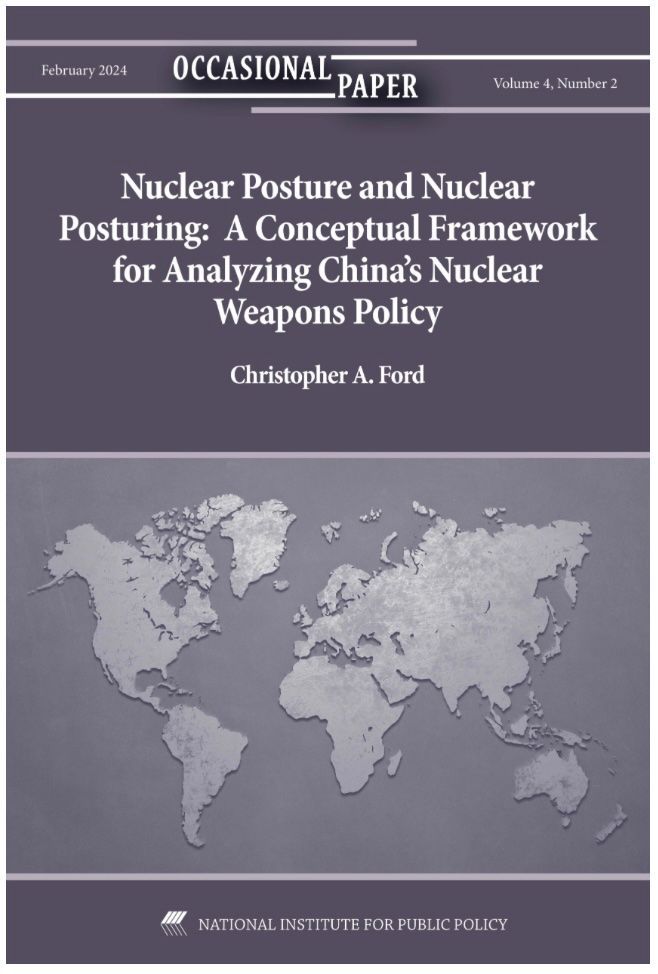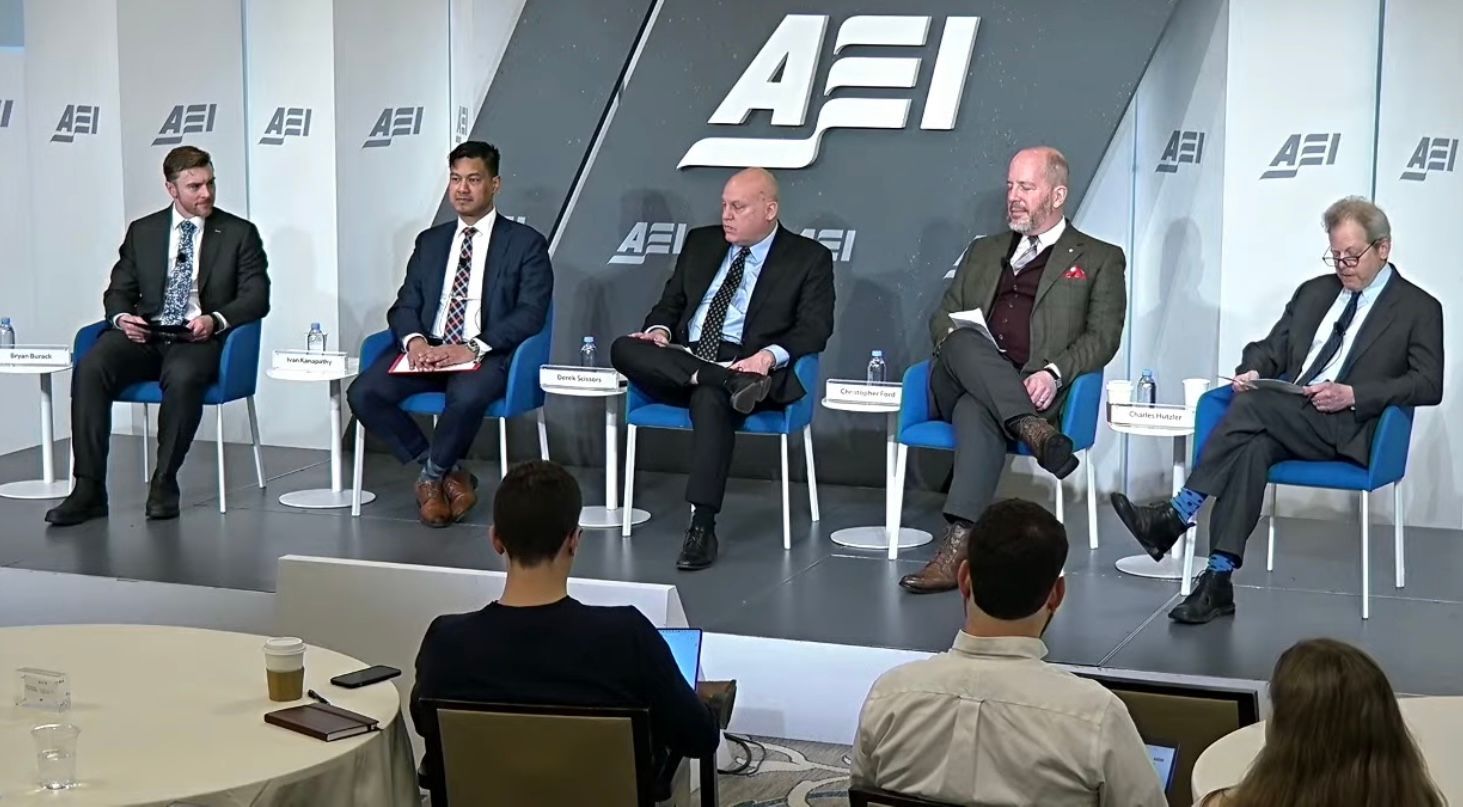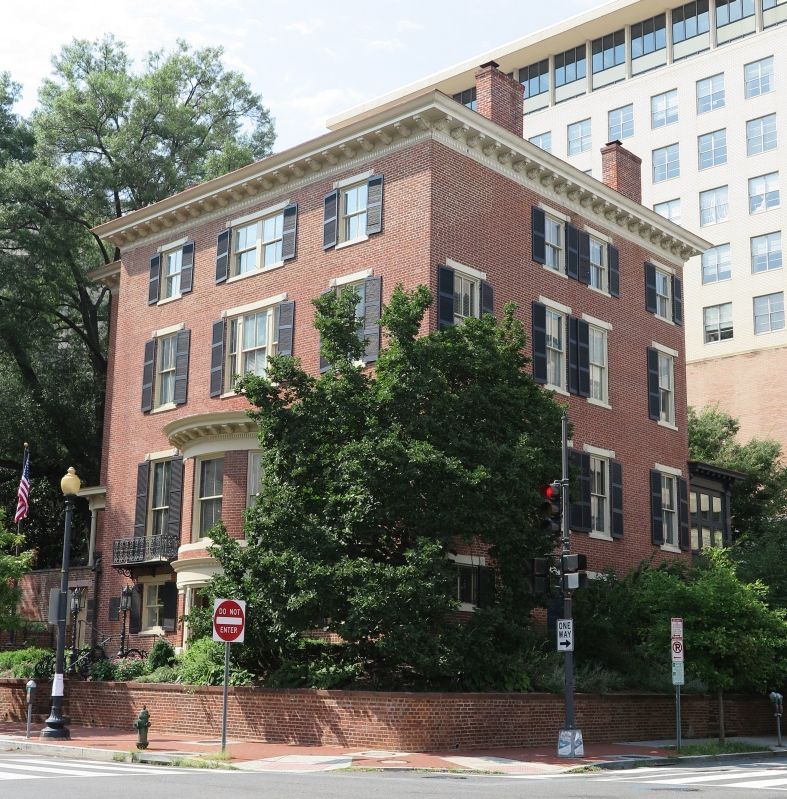The Hon. Christopher A. Ford
New Paradigms Forum -- International Security Policy Since 2009
Analysis of the Obama Administration’s Draft U.N. Security Council Resolution on Nonproliferation and Disarmament
The press yesterday began circulating leaked copies of a draft U.N. Security Council Resolution (UNSCR) said to have been proposed by the new U.S. administration in preparation for President Barack Obama’s much-anticipated chairmanship of a special Council meeting on nuclear nonproliferation and disarmament. No one knows at this point, of course, how the draft will change on its way to adoption, but the U.S. text provides a fascinating window upon the Obama Administration’s approach to arms control and nonproliferation issues.
Much of the draft is unsurprising. Of course the new administration was going to highlight its most significant departure from Bush Administration policy in this arena to date by calling for states to joint the Comprehensive Test Ban Treaty. (Operative Paragraph 5) Nor is it surprising that the new administration would craft phrasing seeming to take credit for beginning talks with Russia on a successor to the expiring Strategic Arms Reduction Treaty, even though the Bush Administration began these negotiations in September 2006. (Preambular Paragraph 9) And of course the Obama team would use crowd-pleasing if ahistorical and tendentious language about the NPT’s “three pillars” – revisionist phraseology that downgrades nonproliferation by making it sound no more important than disarmament and nuclear technology sharing within the Treaty framework. (Preambular Paragraph 5) By the same token, no U.S. sponsored resolution under any administration could avoid calling for compliance with nonproliferation obligations and emphasizing the role of the Security Council in addressing such threats. (Operative Paragraph 1)
Not all of the Obama team’s draft, however, is so uninteresting. The following paragraphs discuss some of the more thought-provoking items.
I. Nuclear Deterrence and Negative Security Assurances
Readers who follow the Nuclear Nonproliferation Treaty (NPT) process will recall that in connection with the 1995 NPT Review Conference, the five nuclear weapons states (NWS) authorized by that Treaty offered so-called “negative security assurances” (NSAs). These promises boiled down to a pledge not to use nuclear weapons except when actually attacked or threatened by nuclear weapons. Provided that a non-weapons state did not gang up with a weapons possessor in committing aggression, therefore – an eventuality that was in fact expressly covered – these NSAs were essentially no-first-use promises vis-à-vis states not having any nuclear weapons. The disarmament community loves such NSAs, and frequently complains that the 1995 promises were not legally binding. There have also been frequent calls for these NSAs to be reiterated.
The Obama Administration’s UNSCR draft ostentatiously waves the NSA flag. Its Preambular Paragraph 12 reads as follows:
"Recalling the statements by each of the five nuclear-weapon States, noted by resolution 984 (1995), in which they give security assurances against the use of nuclear weapons to non-nuclear-weapon State Parties to the NPT, and reaffirming that such security assurances strengthen the nuclear nonproliferation regime …."
This phrasing is actually quite clever, if cynical. To understand why, it is helpful to recall just how hollow the 1995 NSAs were shown to be almost from the start.
The Clinton Administration offered the U.S. NSA pledge in 1995, adapting but not significantly rephrasing a similar pronouncement made by Jimmy Carter in 1978. Just a year later, however – in connection with Bill Clinton’s support for the nuclear weapons state protocol to the Treaty of Pelindaba, the African nuclear weapons free zone agreement – the Clinton White House informed the press that the United States still retained the legal right to use any tool in its metaphorical toolbox, nuclear weapons not excepted, if someone were to attack us with any sort of weapons of mass destruction (WMD). This legal theory was apparently based upon the concept of “belligerent reprisal,” and Clinton officials made it clear that nuclear weapons were no exception. Notwithstanding the 1995 NSA, in other words, the United States reserved the right to use nuclear weapons in response to at least some non-nuclear attacks, and it didn’t matter what the Pelindaba protocol said.
In characteristic fashion, the Clinton White House approached this disingenuously, announcing its departure from its own NSA policy in quiet press backgrounders about Pelindaba and in subsequent communications to Congress designed to ease Senate ratification of the Chemical Weapons Convention. For public audiences, however, it still professed fidelity to its 1995 NSA promises. The administration of George W. Bush did not change the substance of this longstanding U.S. deterrent strategy. In its 2002 National Strategy for Combating WMD , however, the Bush White House had the temerity to trumpet what the Clinton team had apparently hoped the disarmament community would fail to notice: that the United States still reserved the option to retaliate with nuclear weapons against attacks made upon us with chemical or biological weaponry.
Nor was the United States alone among nuclear weapons possessors in having such a policy. British Prime Minister Tony Blair’s Labour government admitted the same thing to the House of Commons in the weeks before the 2003 invasion of Iraq; French President Jacques Chirac articulated a similar position on behalf of France in early 2006. For its part, Russian nuclear doctrine is shockingly unapologetic in anticipating Moscow’s reliance upon the early and liberal use of nuclear weaponry to make up for its conventional military failings, and explicitly contemplates nuclear use in response to non-nuclear attacks. Despite Beijing’s decades of “no first use” posturing, moreover, Chinese military writings also suggest a policy of using nuclear weapons to deter conventional attack – while Chinese officials have made comments indicating that their “no first use” commitment is in fact “conditional.” In short, the United States is no outlier. Every NPT nuclear weapons state (NWS) seems to have a policy that reserves the option of using nuclear force in response to at least some form of non-nuclear attack. Whether they were hypocritically given or were subsequently abandoned, therefore, the 1995 NSAs do not have a very impressive history.
(In fact, it’s not entirely clear there is much to mourn in their passing. There is little reason for any non-nuclear weapons state to fear NWS nuclear weapons – especially American ones – and I am aware of no evidence that they actually do. Countries like Iran and North Korea may fear America’s long-range non-nuclear precision strike and power-projection capabilities, to be sure, but this is a “problem” unaffected by nuclear-focused NSAs. The connection between the lack of legally-binding NSAs and nuclear proliferation is often asserted, but seems implausible; NWS nuclear weapons possession does not appear to be especially relevant in proliferator decision-making. In fact, the most likely circumstances in which a non-nuclear weapons state might actually confront the possibility of nuclear attack would be if it used chemical or biological weapons against a NWS. But is fear of such retaliation something we really wish to eliminate? Even if NSA promises could be believed – which is an interesting question in its own right, especially in light of the Clinton Administration’s treaty-trumping legal theory of “belligerent reprisal” – it would be an odd triumph for nuclear disarmament to make banned biological warfare more attractive and biological weapons more widespread by effectively immunizing their users against nuclear retaliation.)
The Obama Administration appears to wish to create the impression that it is now making up for the perfidy of the NWS in slinking away from their 1995 promises. Administration-friendly political blogger Laura Rozen , to whom someone obligingly passed a copy of the draft UNSC, cites “Washington nonproliferation experts” who describe the draft as being “important” because it
“signal[s] the Obama administration’s return to some international non-proliferation commitments that the Bush administration had walked back from. In particular, they note the proposal’s endorsing that world nuclear powers pledge to not attack non-nuclear states with nuclear weapons ….”
Such political posturing, however, is all smoke and mirrors. Leave aside the false claim that it was George Bush who “walked back from” the 1995 NSAs – in fact, as noted, it was Bill Clinton – and simply read the Obama draft UNSCR a second time. Preambular Paragraph 12 recalls the 1995 NSAs and reaffirms that “such security assurances strengthen the nuclear nonproliferation regime.” It does not, however, reiterate these pledges or give any indication as to whether they are still in force. The paragraph thus steps carefully around the real issue. Unless and until the Obama Administration officially forswears the possibility of nuclear retaliation for a devastating chemical or biological attack – which it seems not to have done – the Clinton/Bush approach must be presumed to remain U.S. policy. (Obama therefore has not “endorse[]d … [the] pledge to not attack non-nuclear states with nuclear weapons,” and in fact apparently continues to reject it.) This draft UNSCR does not constitute a renunciation of longstanding WMD deterrence policy; it’s just supposed to sound like one, and its diplomatic audience is not supposed to read it very closely.
Don’t get me wrong. Such evasiveness is not necessarily a bad thing. There is a real danger that too wide-eyed an enthusiasm for disarmament – and too casual an abandonment of policies such as the Clinton/Bush doctrine of preserving the possibility of nuclear retaliation for chemical or biological attacks – will undermine U.S. alliance relationships, undercut our “extended” nuclear deterrence, and risk provoking nuclear proliferation among friendly states which possess the technical option of nuclear weapons development and conclude from such moves that they can no longer rely upon Washington for strategic security.
Strikingly, just as the draft UNSC was being leaked to press, Japanese media reported that the Japanese government had balked at a proposal made in a draft report by the International Commission on Nuclear Nonproliferation and Disarmament that the United States should forswear the possibility of nuclear retaliation for any non-nuclear attacks. According to the Kyodo News Service (September 13, 2009), Japan’s representative voiced reservations about this proposal precisely because it seemed to signal a weakening of the U.S. nuclear umbrella upon which Japan relies. The existence of such concerns does not necessarily preclude disarmament, of course. It does suggest, however, that making a serious effort to reach the ambitious goal of nuclear weapons abolition will require putting a lot more time, energy, money, and political capital into non -nuclear means of alliance assurance: we will need to be willing – both militarily and politically – to bind ourselves to our allies in new and robustly credible ways. Yet even if this is possible, it not clear that this factor figures significantly in Washington’s new disarmament thinking.
How Preambular Paragraph 12 is handled in the ongoing Security Council negotiations, therefore, could be quite interesting. Perhaps its balance of seeming fidelity to the disarmament community’s conventional wisdom about NSAs with a remarkable degree of actual equivocation on the subject will prove to be exactly the right diplomatic recipe. Or perhaps its inclusion will turn out to have been foolish, carelessly highlighting an issue that even the Obama Administration would rather not receive serious attention. Either way, however, this is an issue worth watching.
II. Article IV and Nuclear Technology Rights
The draft UNSCR seems to deal in multiple locations with the issue of nuclear technology “rights” under the NPT. In Operative Paragraph 2, it observes that “enjoyment of the benefits of the NPT by a State Party can be assured only by its compliance with the obligations thereunder.” In Operative Paragraph 11, the resolution applauds and encourages the IAEA’s work on “multilateral approaches to the nuclear fuel cycle” in order to “address[] the expanding need for nuclear fuel and nuclear fuel services” while “minimizing the risk of proliferation.” Finally, in Operative Paragraph 9, it describes the right of States Party to nuclear energy as one that obtains when such parties are “in conformity with Articles I, II, and III of the Treaty.”
The first comment is true enough, though it only suggests, rather than offers, an Article IV connection in this regard. The second reference – on multilateral fuel supply – represents the Obama team’s continuation of diplomatic initiatives begun during the Bush Administration to provide an attractive alternative to domestic fuel cycle development. (This is a way, as it were, of enticing countries away from wanting to bear the costs and the technological and other risks of uranium enrichment and plutonium reprocessing at home. Regardless of what their Article IV rights are, it was thought, it would be best if countries had no need to do their own fuel cycle work in order to support an expanding domestic power generation program. Refusal to participate in such a program would also be revealingly suggestive of non-peaceful intentions.) These provisions are commendable, but hardly new thoughts.
Operative Paragraph 9 is more interesting, however, in that it carefully tracks the language of the first paragraph of Article IV except that it adds a reference to Article III to that provision’s crucial “in conformity” phrasing. This is hardly without precedent in political documents coming out of the NPT Review Process, for the same “Articles I, II, and III” language was also used in the Final Document adopted by the 2000 NPT Review Conference. Such phrasing is nonetheless significant, because the text of Article IV only mentions Articles I and II. Both the 2000 Review Conference and the Obama Administration’s UNSCR draft, therefore, assert an Article IV requirement of conformity with Article III that is not explicit in the Treaty. Whether or not there is evidence of nuclear weapons proliferation, in other words, if a state willfully violates its International Atomic Energy Agency (IAEA) safeguards agreement, this says it cannot be assured of being permitted any “research, production and use” of nuclear energy at all.
This is a significant assertion, with potentially great power – if the international community’s commitment to enforcing it were taken seriously – to deter dangerous safeguards gamesmanship. It is a shame that the vehicle for articulating this Article III requirement is merely a political document, though the declaration is no less welcome for all that. A legal argument can be made that Article III compliance is indeed implied in the “in conformity” language of Article IV, for neither Article III nor the overall structure of the NPT’s nonproliferation scheme would make much sense if non-weapons states had a “right” under the Treaty to pursue nuclear activity without safeguards. Unfortunately, however, this Article III connection is not explicit in Article IV. The Obama UNSCR may help add political weight to a very sensible interpretation of the Treaty, but good sense is hardly a guarantee of support in multilateral fora, so more is needed.
Perhaps the adoption of this resolution can help build momentum for agreement upon an explicit clarification of Article IV by all NPT States Party at the 2010 Review Conference. Such Review Conference declarations generally do not take – and have not yet taken – a form having any particular legal import, but it is at least conceivable that a well-crafted and quite explicit agreed text in 2010 might pass muster under Article 31.3 of the Vienna Convention on the Law of Treaties as a source to which lawyers can thereafter turn in helping understand ambiguous language in the Treaty. It is too much to hope that an Article IV clarification in 2010 could resolve the longstanding debate over that article’s meaning by making clear that Article IV does not include a right to fissile material production capabilities usable in making nuclear weapons. (There is, appallingly, no consensus behind this commonsensical idea.) Nevertheless, perhaps the Obama Administration can build upon its “Articles I, II, and III” language in the draft UNSCR in order to achieve something important in clarifying the last few words of the first paragraph of Article IV at the Review Conference.
III. NPT Universality
Operative Paragraph 3 of the UNSCR calls for the NPT’s universality, urging parties outside the Treaty – and here, of course, is meant India, Pakistan, Israel, and (now, sadly) North Korea – to join it “at an early date.” Interestingly, however, the draft’s insistence upon accession is not absolute. Pursuant to Article IX(3) of the Treaty, simple accession by any state that detonated its first nuclear weapon after January 1, 1967, can only mean accession as a non -nuclear weapons state. Calling for “universality” of the NPT, therefore, is a demand that all non-Parties give up every nuclear weapon they currently possess.
Presumably because, to put it charitably, this seems unlikely to happen in the foreseeable future, the UNSCR draft has a fallback position. Non-Parties, it says, should “in any case … adhere to [the Treaty’s] terms.” (Operative Paragraph 3) This is intriguing. What specific Treaty terms does the UNSCR have in mind? It is clearly a good idea for non-Parties to adhere to the terms of Article III by accepting IAEA safeguards. Similarly, it can only be good for non-Parties in possession of nuclear weapons technology to adhere to the terms of Article I – which bars weapons possessors within the NPT from helping anyone else acquire such weapons. It contributes nothing, however, to call for these non-Parties’ adherence to the terms of Article II , which prohibits the acquisition of nuclear weapons by non-weapons states. (After all, if they were willing to agree to this – i.e. , to disarm – they could simply sign the Treaty, and it would not be necessary to invent circumlocutions about adhering to its terms.)
The thrust of the UNSCR’s phrasing, therefore, seems to be that the Americans are holding out to non-Parties the vague suggestion of an informal quasi-weapons state status – neither quite fish nor yet quite fowl – outside the NPT itself but in still within the broader nuclear nonproliferation regime. This is quite an intriguing idea, apparently build upon the Bush Administration’s conceptual innovations in the 2005 U.S.-India initiative. (Through that agreement, India was rehabilitated as a nuclear technology trading partner on the condition that it separate its military from its civilian nuclear programs, subject the latter to IAEA safeguards, improve its nuclear export controls, and forswear further nuclear explosive testing on pain of having technology cooperation withdrawn.) If Operative Paragraph 3 means what it appears to mean, this idea – which is sure to be contentious – bears watching in the UNSCR negotiations and in the 2010 NPT Review Conference itself.
IV. Withdrawal from the NPT
Taking a page from Bush Administration diplomats who first began discussing such ideas with foreign counterparts after North Korea’s withdrawal from the NPT in 2003, the draft UNSCR says strong things about Treaty withdrawal. In Operative Paragraphs 14, the draft “affirms that a State remains responsible under international law for violations of the NPT committed prior to its withdrawal.” Operative Paragraph 15 urges technology suppliers to make it a condition of nuclear trade that in the event of a recipient’s NPT withdrawal, the supplier can demand the return of whatever material and equipment it had previously provided. Operative Paragraph 17 also calls for agreements to specify that IAEA safeguards obligations will survive NPT withdrawal.
It is not clear how much practical significance such disgorgement clauses would have in the most difficult cases. (Would the regime in Pyongyang, for instance, particularly care about honoring such contractual stipulations?) Nevertheless, such provisions might yet have a modest impact in some cases, particularly for regimes such as Iran, which even in the midst of flagrant nonproliferation noncompliance retains some odd respect at least for the appearance or pretense of legality – and which, at any rate, still wishes to have extensive economic relationships with the outside world that might be complicated by protracted contract disputes over nuclear technology. These ideas of nuclear technology return – which, as I recall, originated, at least within the U.S. policy community, in a series of dinner discussions sponsored by the Nonproliferation Policy Education Center in late 2003 that brought together both U.S. State Department and French Foreign Ministry officials and Congressional staffers interested in deterring withdrawal by other proliferators – thus seem to be acquiring real policy “legs.” It will be interesting to see how these proposals fare in the negotiation of the final UNSCR text, and in the 2010 Review Conference.
V. Nuclear Weapon Free Zones
Finally, the Obama UNSCR draft welcomes and supports efforts to conclude nuclear weapon free zone (NWFZ) treaties, and declares that such agreements “enhance[] global and regional peace and security, strengthen[] the nuclear nonproliferation regime, and contribute[] toward realizing the objectives of nuclear disarmament.” This is a commonplace assertion frequently heard in disarmament circles, and is one of the few areas covered by this text in which the Obama Administration seems to have a genuinely different view than the Bush Administration, so it is hardly surprising to find such language in the draft. The NWFZ issue, however, is interesting in that if properly understood, it returns us to the awkward issues raised by the UNSCR draft’s discussion of the 1995 NSAs.
NWFZ treaties are often discussed as if they pertained only to preventing the acquisition of nuclear weapons by states within their defined geographic scope. This makes such agreements sound like nonproliferation instruments, but this is only part of their function. It is also by far the least important, because the NPT already prohibits non-weapons states from acquiring nuclear weapons. As nonproliferation instruments, therefore, NWFZs are largely superfluous.
Another function of NWFZ agreements, however, is, in effect to limit the NWS’ ability to use nuclear weapons in building alliance relationships, and to restrict weapons deployment opportunities. NWFZs usually preclude basing anyone’s nuclear weaponry in states party to such treaties, thereby preventing the development of strong NATO-style alliance relationships involving the provision of “extended [nuclear] deterrence” in the form of NWS weapon deployments on allied soil. Depending upon how their geographic reach into ocean areas is defined, moreover, NWFZs may also affect NWS’ ability to deploy or transit naval vessels carrying nuclear weapons, such as ballistic missile submarines. (This is said to have been a concern in connection with the proposed South East Asian NWFZ protocol.)
A third function of NWFZs is to make 1995-style negative security assurances legally binding upon the nuclear weapons states. This is not dealt with in the main body of most NWFZs, but provisions to this effect usually appear in a protocol to such agreements that is offered to the NWS for signature. (The Tlalelolco [South America], Pelidaba [Africa], and SEANFWZ [South East Asia] treaties all have such protocols.) The customary terms of such protocols legally bind NWS signatories not to threaten or use nuclear force against any non-nuclear weapons state party to the agreement. Not surprisingly, the protocols contain no exemption for non-weapons states that attack a NWS with chemical or biological weaponry, or with any other non-nuclear weapons.
There is also a variation upon the NWFZ formula that has been rather outrageously developed and promoted by Russia as a means of facilitating its exercise of power in the former Soviet territories of its “near abroad.” The Central Asian NWFZ treaty – CANWFZ, or “can-fizz” if you wish to sound like a knowledgeable insider – is structured in such a way as to make a legal exception for pre-existing defense agreements such as the Treaty of Tashkent between Moscow and a number of its Central Asian neighbors. This “nuclear weapon free zone,” in other words, technically creates something more like a “nuclear weapon monopolization zone”: in extremis , Russia retains the potential right to deploy nuclear weapons on the soil of CANWFZ states party pursuant to prior defense arrangements that deem an attack against one to be an attack against all, but CANWFZ purports to exclude all other weapons possessors in this regard. This extraordinarily misnamed treaty – which does anything but “contribute[] toward realizing the objectives of nuclear disarmament,” and which caters to Moscow’s worst instincts in recreating a neo-imperial sphere of influence in the territories of its former empire – is apparently among the agreements the Obama UNSCR draft goes on record “[w]elcoming and supporting.”
The Bush Administration – which agreed with the Clinton Administration that nuclear weapons retain some utility in deterring chemical and biological attack, agreed with its NATO allies that deployment-based extended deterrence still retains at least some value in the contemporary security environment, and agreed with deterrent theories operative since the 1960s that maintaining a survivable second-strike force of ballistic missile submarines was important to strategic stability – was disinclined to support NWFZ treaties. The Obama team, however, professes to like them.
That said, is not clear what precisely the new administration means by its espousal. It could be that, like Bill Clinton before him, President Obama seeks to reap the public relations benefit of acceding to NWFZ protocols while relying upon our potential adversaries to notice (and be deterred by) the fact that the U.S. legal theory of “belligerent reprisal” makes such NSA-style pledges essentially meaningless. Or it could be that the new administration genuinely likes Free Zones. The evidence available to date does not suggest an answer. Having gone to some trouble to reintroduce the idea of NWFZs into U.S. public policy discourse, however, the Obama Administration should expect to face tough questions, from foreign diplomats and Congressional leaders alike, about the implications of its rhetoric.
VI. Conclusion
The Obama Administration’s UNSCR draft thus repays careful study. It is anyone’s guess what the final text will be of any Resolution agreed to by the Security Council. Even if it ends up being amended beyond recognition, however, the current draft text is valuable in its own right as an “issue-spotting” primer and an introduction to the Obama team’s thinking about these issues – both its continuities with Bush Administration nonproliferation policy and its occasional divergences. This draft provides the best indication yet of how the new U.S. team will approach the myriad substantive issues that will arise in connection with the upcoming 2010 NPT Review Conference.
-- Christopher Ford



Copyright Dr. Christopher Ford All Rights Reserved






